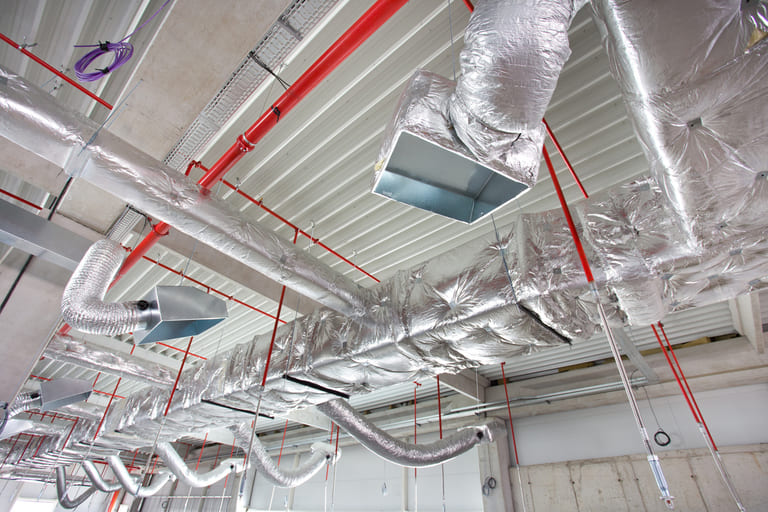

Taiyo Kogyo Column
Practice! How to start a warehouse rental business|Detailed explanation of types, advantages, disadvantages, and warehousing laws.
2024.01.12
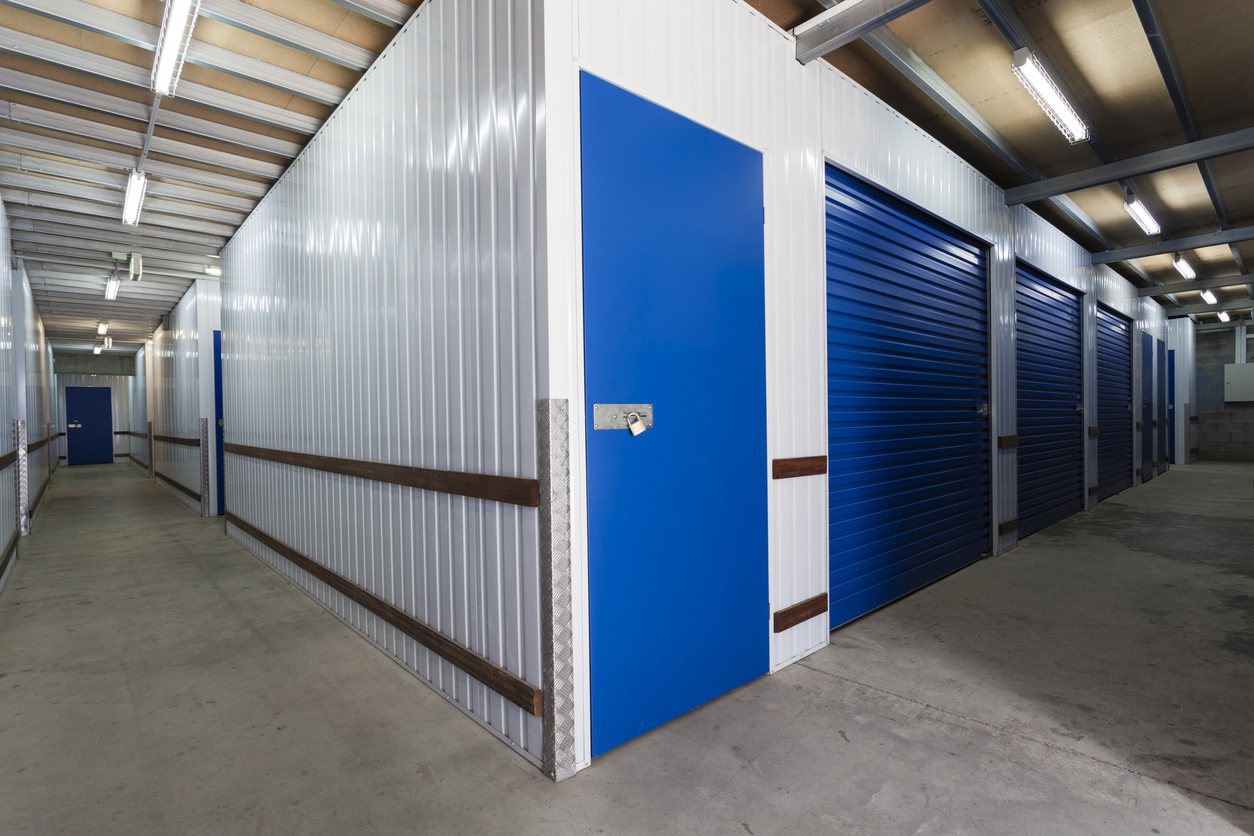
Warehouse management for rent is attracting attention as a new wave of land utilization. Compared to apartment and condominium management, warehouse rental operations can be started with lower initial costs. The high yield on such assets has attracted many people’s interest.
However, there are many different types and forms of warehouses for rent, each with its own characteristics. In order to succeed, it is necessary to have a deep understanding of these characteristics, their advantages and disadvantages. This article will explain in detail the basics of running a warehouse rental business, as well as the steps to actually starting a business.
What is a warehouse rental business?

Architects and engineers, construction workers join hands while working as a team and collaborative concept after completing the agreement on the office construction site
Warehouse rental business is the business of offering vacant land as warehouse space and earning a fee for its use. This is similar to a “trunk room,” but the services offered, the contract format, and the needs of the users are different. For many land owners, this is an attractive option for land utilization. Each will be explained in detail.
Warehouses for rent (commercial warehouses)
Warehousing for rent is the business of providing warehouse space and entering into real estate lease agreements with companies and individuals who use it. This is also called a “commercial warehouse. Users are required to manage the storage conditions of goods in the warehouse by themselves. Therefore, the management burden on the operator is relatively low.
On the other hand, unlike trunk rooms, rental warehouses are usually large and have many corporate users. They are expected to be used for storing large scale goods and for business purposes. It is important for the operator to not only provide space based on the contract, but also to consider services that meet the needs of the users, such as security and ease of access.
Warehouse rental operations are attracting attention as an effective use of land. Demand is expected to be particularly high for land located in urban areas or in key logistics hubs. When starting this business, it is essential to analyze the location and target market. In addition, you will be required to provide unique services and added value to differentiate yourself from the competition.
trunk room
A trunk room is a service for individuals and corporations to store goods. This service differs significantly from a rental warehouse in terms of the contract format. Warehouse rental is operated based on a general lease contract, and the responsibility for storage of goods basically rests with the user. Trunk rooms, on the other hand, are operated under a deposit agreement, so the responsibility for storage falls on the service provider as well.
Having storage responsibilities is one of the barriers to starting a business. On the other hand, the fact that you do not have to assume storage responsibility in a rental warehouse is a major advantage.
Types of Warehouses for Rent
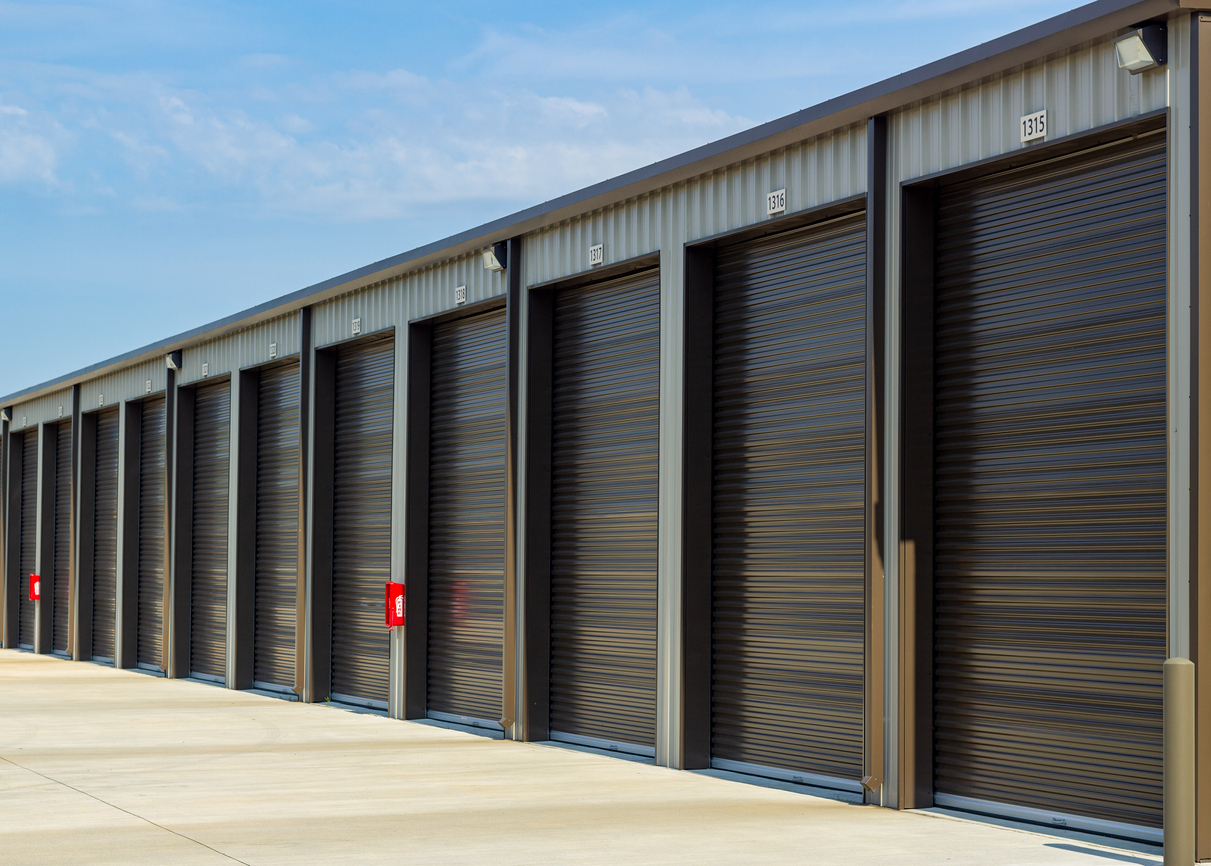
Row of outdoor mini storage units in Conroe, TX.
There are two main types of warehouses for rent. One is the indoor type and the other is the outdoor type. Indoor warehouses are compartmentalized spaces within a building and have the advantage of safety and climate control. In contrast, outdoor warehouses are open spaces and are suitable for storing large items. These types are selected according to the type and quantity of goods to be stored. Each is explained in detail below.
indoor type
Indoor rental warehouses utilize vacant rooms or floors in buildings or factories as storage space. This type is relatively inexpensive to set up containers, and temperature and humidity can be easily controlled.
This makes them ideal for storing environmentally sensitive goods such as food and electronics. In addition, indoor warehouses offer high security and a variety of space sizes, making them suitable for a wide range of needs. These characteristics make them attractive to a wide range of users, from individuals to businesses.
outdoor type
Outdoor rental warehouses are operated by placing containers on a large piece of land. This type allows for the placement of many containers depending on the size of the lot, thereby increasing revenues. The outdoor type is characterized by the ease with which containers can be set up and removed.
This has the advantage of making it relatively easy for landowners to change or exit their businesses. Outdoor rental warehouses are particularly suitable for storing large items, machinery, and other items that require a lot of space.
Disadvantages of Warehouse Rental Management

Action of a person is using ballpoint pen to marking on the risk assessment matrix table at "High risk" level. Industrial or business working action scene photo. Close-up and selective focus.
Warehouse rental management has many advantages, but there are also disadvantages. It is important to understand these and plan accordingly. Please make sure you understand them and use them in your management plan.
Difficult to determine demand
Warehouse management for rent is one way to utilize land, but there are several drawbacks to its success. In particular, it is difficult to accurately assess local demand. Furthermore, demand can fluctuate depending on market conditions and competitors. There is also the risk of reduced revenues if a competitor enters the market later.
Capture demand as accurately as possible through market research and research of local needs. Using this information to develop strategies and a flexible business plan will lead to long-term success.
It takes time to attract customers.
Because warehouse rental operations are a relatively new business model, awareness of this business model is still low compared to general rental properties. Therefore, it takes time and patience to attract customers. While general rental properties can take advantage of major real estate portals, information on warehouses for rent is often only available through limited media.
Dedicated advertising media do exist, but they are still few in number and do not provide sufficient information. Other common means of advertising include flyers and billboards, but it is difficult to attract enough customers with these alone.
Difficulty in attracting customers is one of the major disadvantages of operating a warehouse for rent. To be successful, these challenges must be overcome and an effective marketing strategy must be developed.
Area is restricted by city planning law.
When starting a warehouse rental business, please be aware of the zoning restrictions imposed by the City Planning Law, although this is only in some areas. This law restricts construction of warehouses for rent in three areas. Specifically, construction of warehouses for rent is basically not permitted in Type 1 Low-rise Dwelling Exclusive Zone, Type 2 Low-rise Dwelling Exclusive Zone, and Type 1 Mid- to High-rise Dwelling Exclusive Zone.
These areas are intended for residential construction and do not permit the construction of commercial facilities such as warehouses for rent. Therefore, when planning a warehouse rental business, it is necessary to accurately ascertain the zoning of the land in advance. Failure to confirm this may risk frustrating your plans at a later date. Make sure you fully understand the provisions of the City Planning Law and reflect them in your plans.
Difficulty in obtaining loans from financial institutions
One of the major challenges in running a warehouse rental business is the difficulty in obtaining financing from financial institutions. In the case of general apartment and condominium management, these rental properties are considered to have stable asset values, making it easier to obtain financing from financial institutions. This is because these rental properties bring in stable rental income and are perceived as having high certainty of repayment.
On the other hand, warehouses for rent are often viewed as having low asset value and may be evaluated as low value as collateral for loans. In addition, since it is not easy to generate stable rental income from rental warehouses, they may be judged as less stable in terms of repayment.
As a result, self-financing becomes increasingly important in the management of warehouses for rent. It is important to be able to prepare funds in a planned manner. Based on a clear business plan, make sure that you have a clear outlook for future earnings.
Management risk.
Warehouse rental operations are considered relatively easy to manage and low-risk, but even so, they are not entirely risk-free. A variety of problems can occur, including theft, illegal use, and illegal dumping of garbage on the premises.
In particular, proper ventilation and temperature control are essential for indoor rental warehouses. Failure to do so creates the risk of deterioration or damage to stored goods. Security measures for rental warehouses are also important. Inadequate security controls increase the risk of theft and break-ins.
Ongoing management and attention are necessary to prevent these risks. Although it is often considered less time-consuming than other land use methods, having an appropriate management system in place will prevent problems and stabilize the business.
How to start a warehouse rental business

urban planning - people discussing about territory building plots on cadastral map for apartment building construction
A systematic approach to starting a warehouse rental business is important. First, consider the effective use of land. You need to select an appropriate area and consider its size. Next, understand the needs of the market and differentiate yourself from the competition.
These steps will help you achieve efficient and profitable management. We will explain them in detail in four specific steps.
STEP1: Survey the land and surrounding environment
The first step is to “survey the land and surrounding environment. At this stage, check the “zoning” of the land and the neighborhood in detail. Determine the best location for management. There are 13 zoning districts in Japan, but warehouse rental operations are only permitted in certain areas.
The main areas include first class residential areas and commercial areas. These can be verified through public sources. Another important factor is the availability of U-turn space for warehouse convenience and the presence of competing stores in the neighborhood.
A comprehensive survey of the land and surrounding environment can reduce risk and set you on the path to success. It is an important step in solidifying the foundation of your business.
STEP2: Determine the target
The next step is to determine the target market. At this stage, the company should conduct a location survey and a competitive survey of the area, and even develop a differentiation strategy. Ideally, the location research should be done by actually visiting the site. If this is not possible, use online tools such as Google Maps for efficient research.
Warehouse rental management requires flexibility in responding to local needs. By clearly defining your targets, you can effectively design the services you offer and reach the right clientele.
STEP 3: Determine the management method
There are three main management methods, each with its own advantages and disadvantages.
- The self-management method is one in which the manager handles all operations himself. This method is expected to maximize profits, but the time and effort required to run the business is correspondingly high. Time constraints can be a major issue, especially when running a business on the side.
- The outsourcing method is a method of outsourcing specific tasks to outside specialized contractors. Efficient management can be achieved, but payment to outside vendors is required.
- In the bulk leasing method, the land or warehouse is leased to the operator, who receives a dividend from it. This method requires little effort related to operations, but earnings tend to be relatively low.
Each of these management methods has its advantages and disadvantages. The key to success in managing a warehouse for rent is to select the most appropriate method based on a comprehensive consideration of your company’s resources, objectives, and profit expectations. The choice of management method will greatly affect the efficiency and profitability of your business, so careful consideration is required.
STEP4: Construct facilities
The last step is the actual construction of the facility (warehouse). At this stage, appropriate measures are required to comply with the law. For example, when installing containers, the Building Standard Law is observed and the necessary building permit applications are filed. Although JIS-certified containers are mainly selected for safety reasons, there are cases where an application is not required, depending on special exceptions or the type of business.
Adding unique features to trunk rooms and facilities is recommended to differentiate them from the competition. For example, the addition of refrigeration and freezers can be beneficial in meeting diverse storage needs. Offering different sized trunk rooms and introducing a variety of payment options will also enhance user convenience.
In recent years, tent warehouses are increasingly being constructed. Tent warehouses are constructed by assembling a lightweight steel frame and covering it with a sheet membrane. This type of warehouse has the advantage of being low-cost and can be constructed in a short period of time.
For a successful warehouse rental business, it is important to provide appropriate facilities and services considered from the user’s point of view. When proceeding with a construction project, the needs of users must be fully considered in order to provide facilities that are both unique and functional.
What is the "Warehousing Business Law" as it pertains to the management of warehouses for rent?
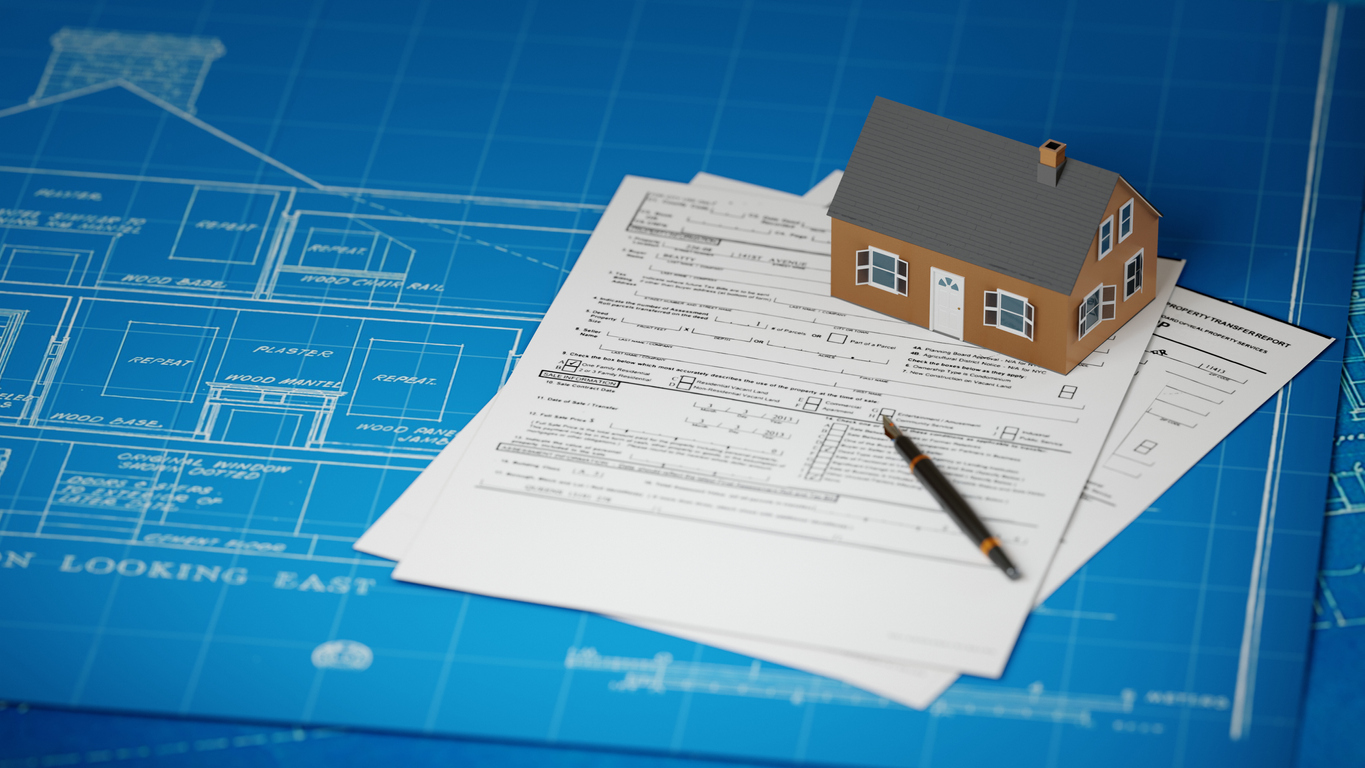
Real estate business, house building concept. Suburban house model with blueprints and legal papers. Digital render.
Before starting a warehouse rental business, it is essential to properly understand the Warehousing Law. This law is the basic norm for the warehousing for rent industry, detailing the standards and regulations for the industry.
An important aspect of the Warehousing Law is that operating without registration or “name lending” is considered illegal and will be strictly enforced. These violations can result in imprisonment and fines. Therefore, please comply with the law and follow the regular procedures.
Proper registration and licensing is an important factor not only in enhancing business credibility, but also in avoiding legal troubles. Operating in accordance with this law lays the foundation for trust and safety in the management of warehouses for rent.
Commercial warehouses" and "private warehouses" subject to the Warehousing Law
Warehouses are divided into two types: commercial warehouses and private warehouses. Commercial warehouses are used to store other people’s goods, while private warehouses are used to store the owner’s own goods.
The Warehousing Business Law covers “commercial warehouses,” and warehouses for rent also fall under the category of “commercial warehouses. Therefore, warehouse operators are required to comply with the provisions of the Warehousing Business Law. In recent years, demand for warehouses for rent has been increasing along with the expansion of the e-commerce market, making it increasingly important to operate under appropriate laws and regulations.
Points to consider before signing a rental warehouse contract
One important point to note in the management of warehouses for rent is the issue of “name lending”. Nominal leasing is the act of operating a warehouse business under the name of another person, and is strictly prohibited under the Warehousing Business Law. Violation of this act may result in imprisonment for up to one year or a fine of up to one million yen.
The act of name rental can cause reliability and safety issues for both the operator and the user, as liability is unclear. Therefore, when signing a contract for a warehouse rental business, it is important to confirm that the vendor is officially registered and that they have a good understanding of name rental.
In the management of a warehouse for rent, it is essential to comply with the provisions of the Warehousing Business Law and to adhere to accurate knowledge and procedures. This will protect the trust and safety of both the vendor and the users, and ensure the sound operation of the business. Compliance with warehousing laws is very important not only to avoid legal problems, but also to enhance the credibility of the business.
summary
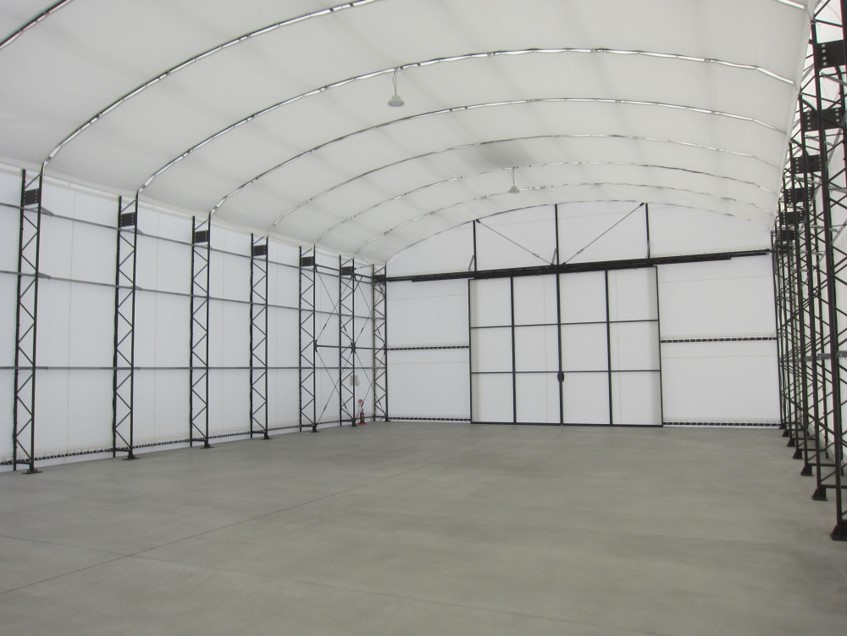
Critical steps in starting a warehouse rental operation include surveying the land and surrounding environment, identifying targets, determining management methods, and constructing warehouse facilities. Throughout these processes, we will bring your warehouse rental operation closer to success. In addition, understanding and complying with warehousing laws is essential to ensure legal and safe operations.
If you are considering building a new warehouse for rent to start a warehouse rental business, a “tent warehouse” is an effective option. A tent warehouse is a warehouse constructed with a lightweight steel frame and sheet membrane. When building a warehouse for rental, various standards must be met in order to obtain a permit, which is a complicated, time-consuming, and expensive process. On the other hand, tent warehouses can comply with permit standards and reduce the initial cost and construction period.
In addition, tent warehouses are durable and weather-resistant, providing a bright and efficient work environment. This offers the advantage of starting efficient warehouse operations with a low initial investment. In recent years, advanced manufacturers and the logistics industry have been increasingly using these tent warehouses, contributing to efficient warehouse operations.
If you are at all interested, please visit the website of Taiyo Kogyo Corporation, which is celebrating its 100th anniversary and boasts the No.1 share in the tent warehouse industry in Japan.
Tent Warehouseへの
Contact us

What you need to know when building a warehouse
We packed it all in.
Clues to solving the 2024 problem
I want to build a warehouse in an economical way.
Which type of warehouse should we build?
I want to learn the basics of warehouse construction anyway.
I'm concerned about the 2024 problem, but I don't know what to do about it.
Related Articles
- TOP>
- Taiyo Kogyo Column>
- Practice! How to start a warehouse rental business|Detailed explanation of types, advantages, disadvantages, and warehousing laws.







